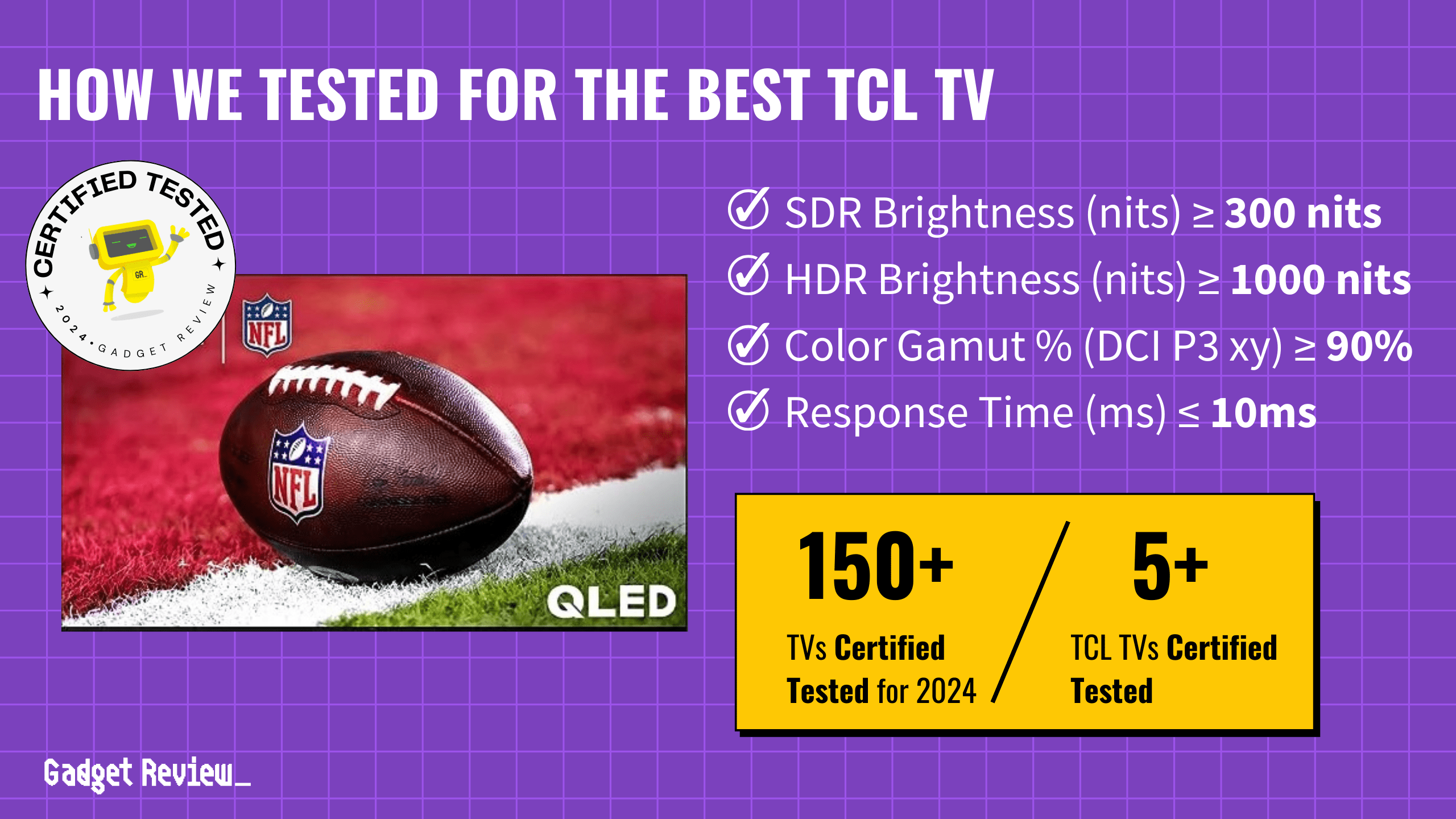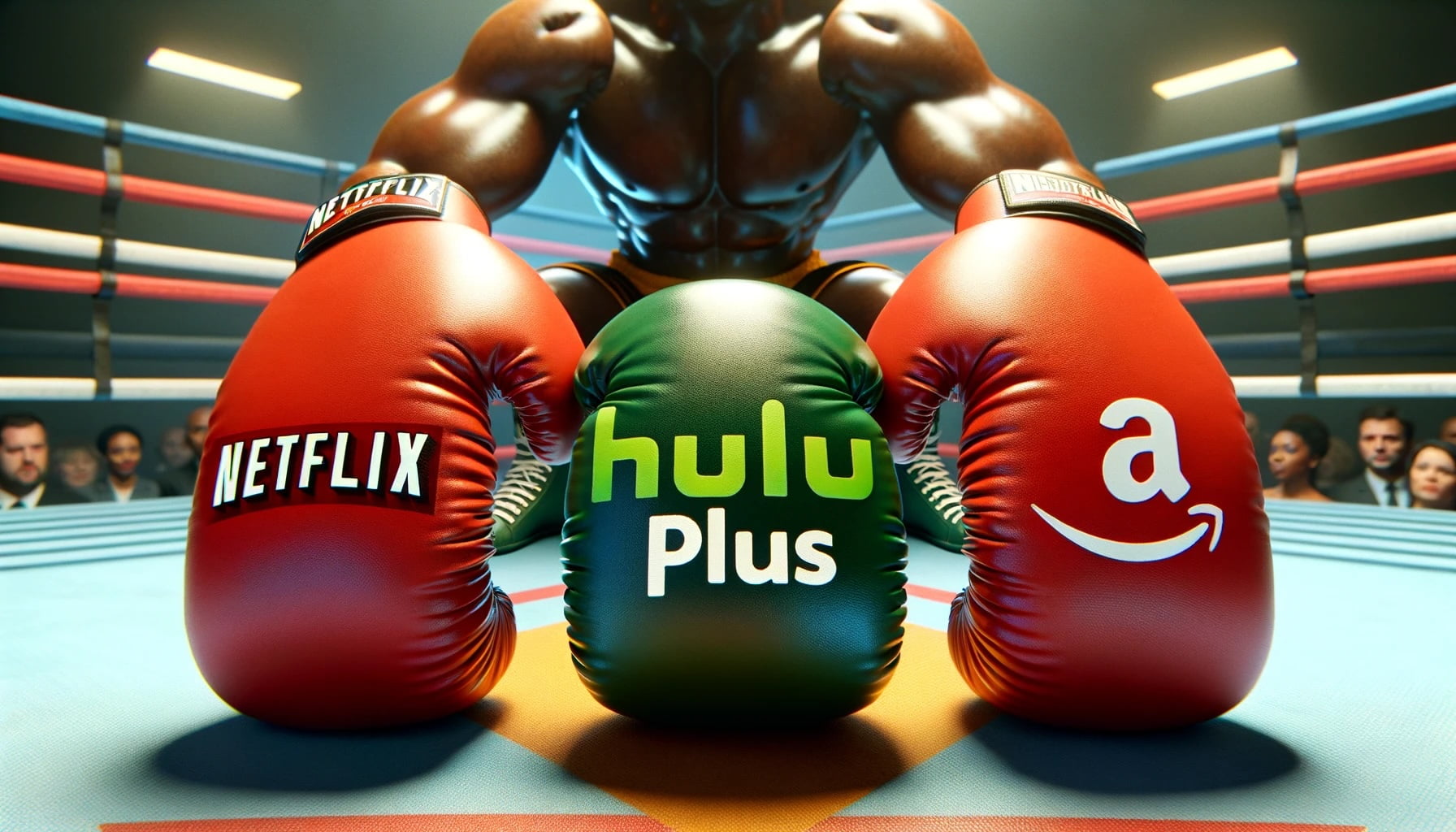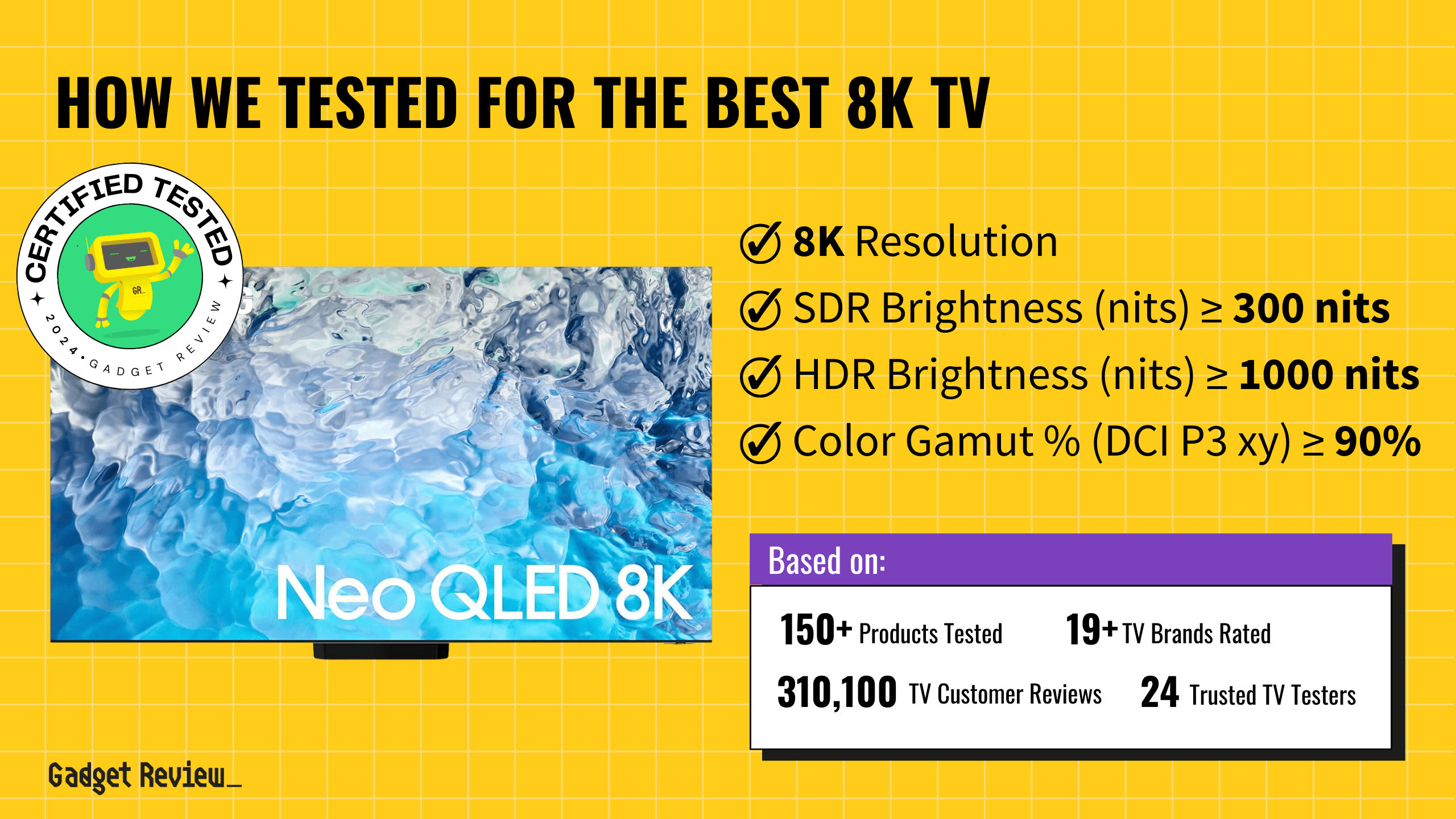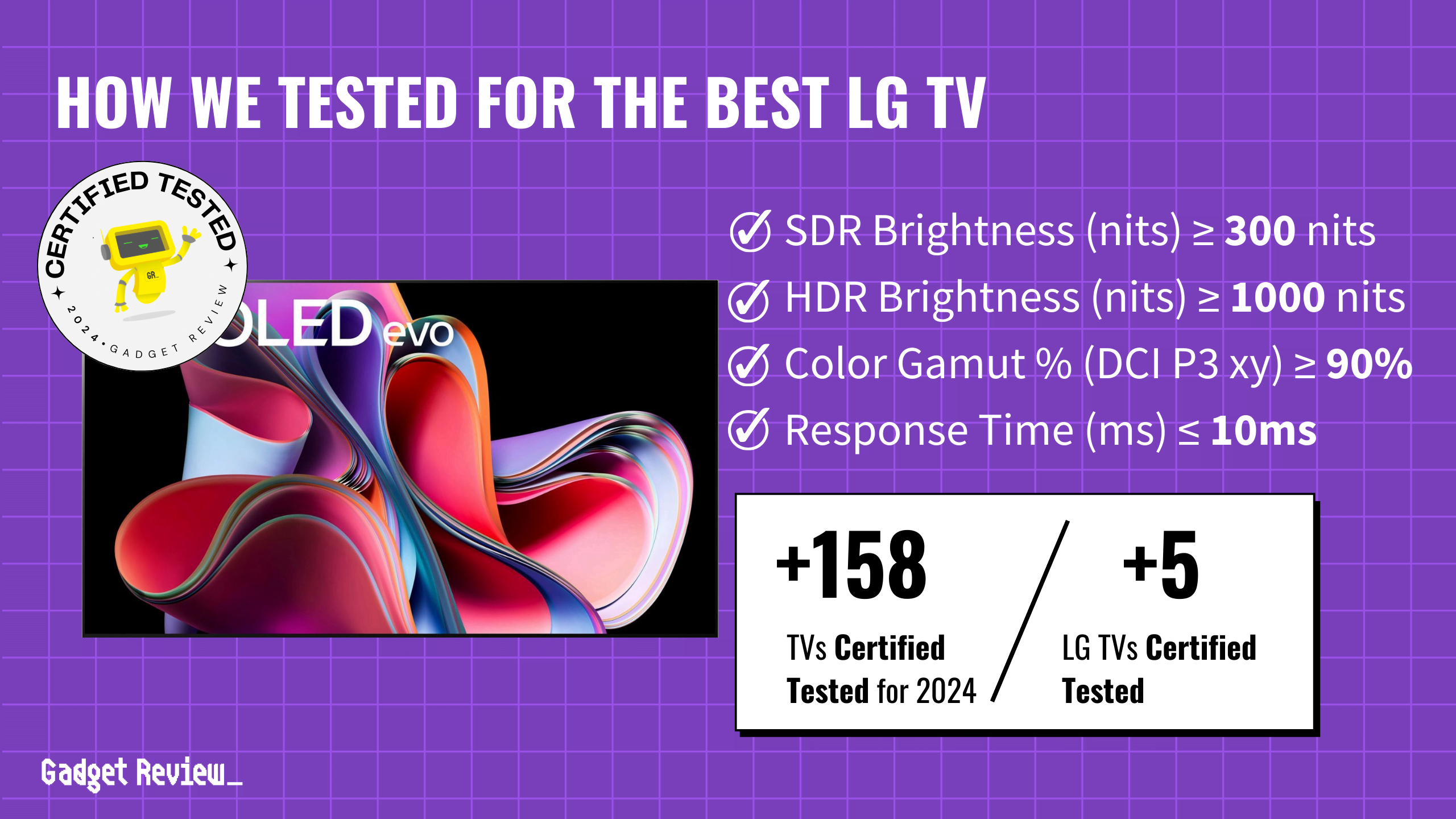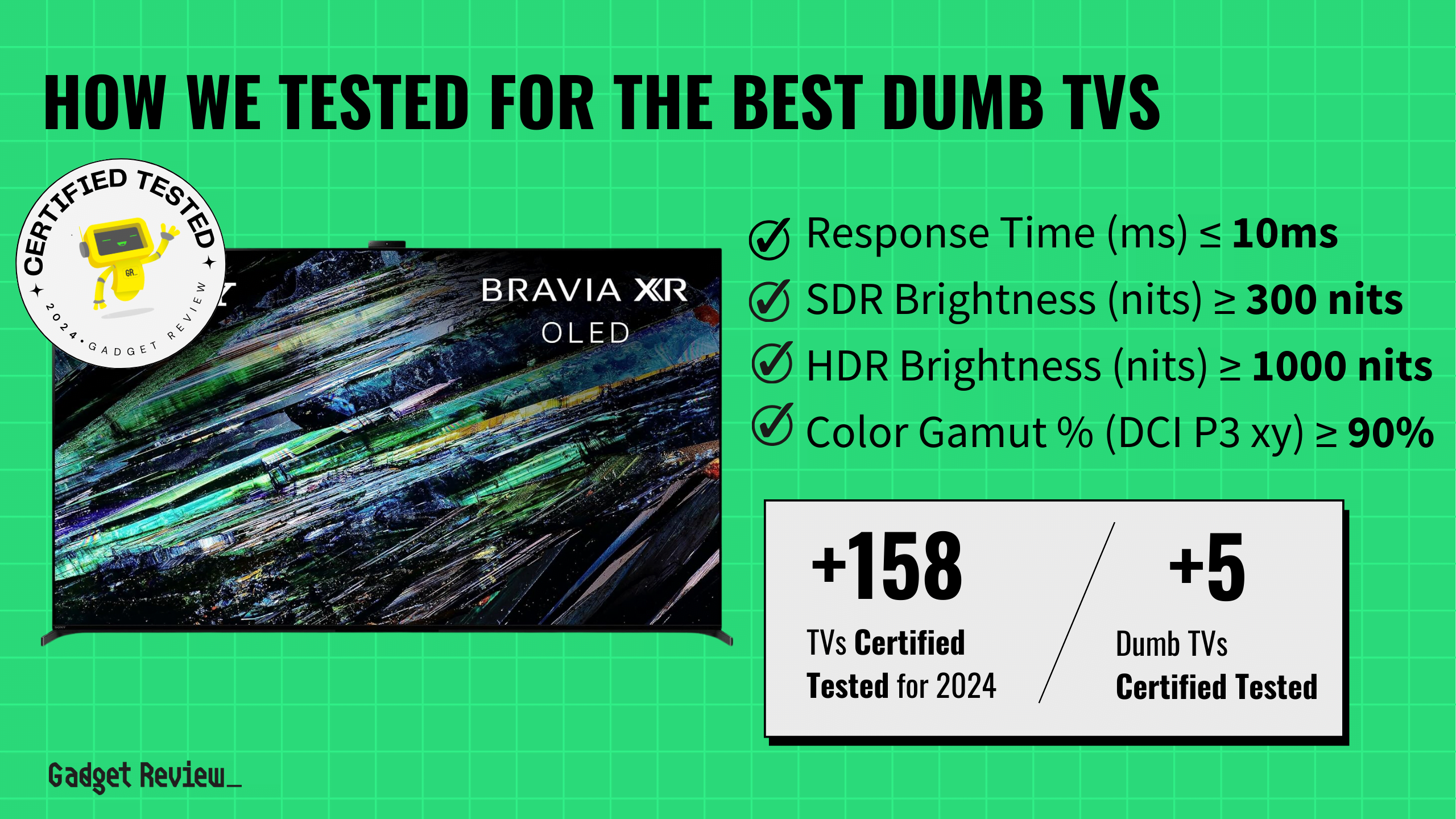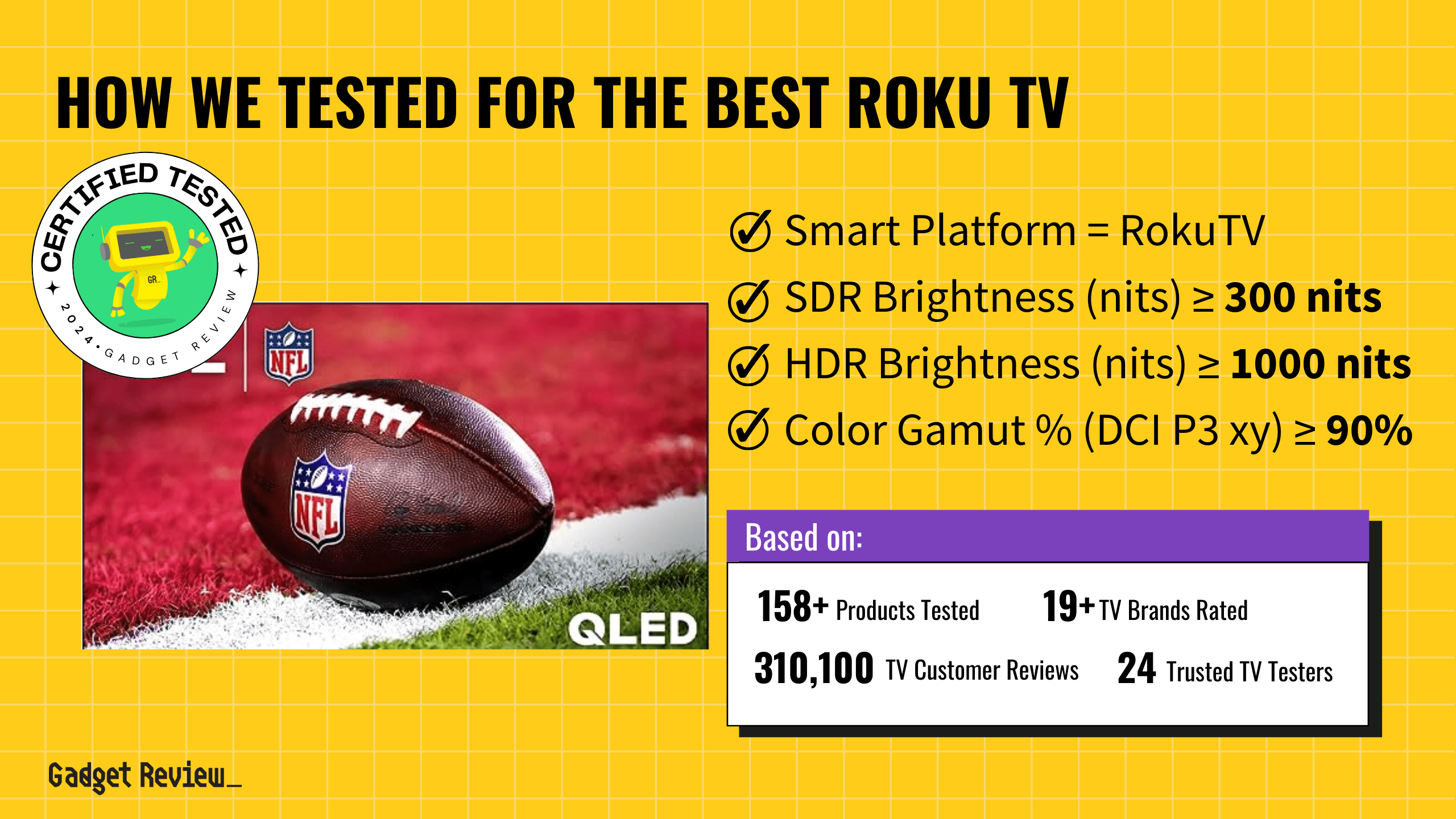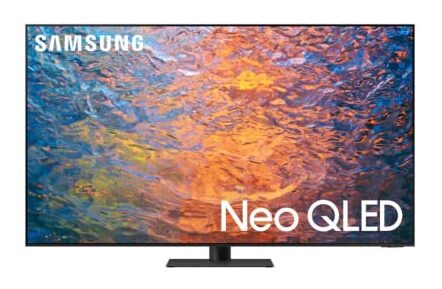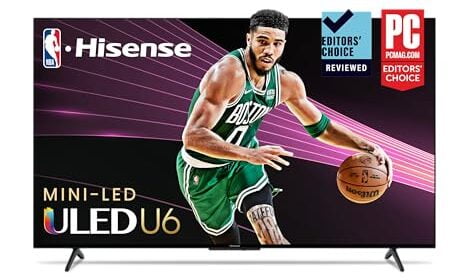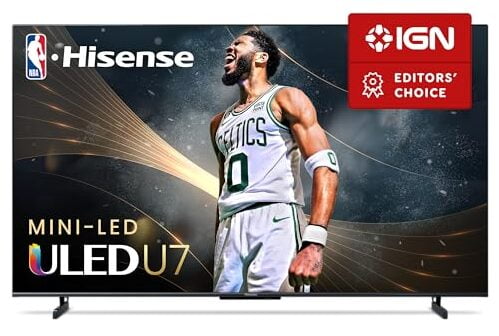The best TCL TV combines cost-effectiveness with high performance, showcasing that premium quality doesn’t always come with a high price tag. Supported by rigorous test data, our top picks stand out for their exceptional picture quality, advanced smart features, and competitive performance against more expensive brands.
When it comes to finding the best TVs on the market, TCL’s offerings are hard to beat, blending affordability with top-tier technology. TCL proves that you can enjoy vibrant visuals, seamless smart TV functionality, and outstanding overall value, making it a top choice for those seeking to enhance their viewing experience without breaking the bank.


TL;DR
When you shop through our links, you’re backing our mission.
How Did We Rank the Best TCL TVs?
To assess how high or low quality a TCL TV actually is, one must evaluate specific testing criteria against reference industry standards. Using our thorough TV Testing Methodology, we determined there are 6 criteria below (3 required, 3 nice to have) that ensure your content looks as good as the creator intended it.
? Test Criteria
- SDR Brightness: Equal to or greater than 300 nits, ensuring a bright and clear display under any lighting conditions.
- HDR Brightness: 1000 nits or more, to reveal the finest details in high dynamic range content.
- Color Accuracy: At least 90% of the DCI P3 color gamut, providing rich and vibrant colors.
? “Nice To Haves”
- Contrast Ratio: 10,000:1 or higher, offering deep blacks and bright whites for an exceptional viewing experience.
- EOTF Accuracy: Delta E less than or equal to 0.018, for precise brightness and contrast across the board.
- Fast Response Time: 10ms or less, ensuring smooth transitions without motion blur.
We’ve redefined redefined TV buying guides, setting us apart from any other site on the planet. Our unique approach combines in-house verification with a comprehensive dataset from over 200+ trusted sites, focusing on key testing metrics to rank the top rated TCL TVs. Testing data include brightness of 300 and 1000 nits, Color Gamut % (DCI P3 xy) >= 90%, and Contrast Ratio (x:1) >= 10,000. In this case it’s for TCL TVs, ensuring optimal viewing even in bright lights and tight spaces. Discover our data-driven methodology for precise, reliable TV recommendations. Our commitment to unbiased reviews is powered by our ‘True Score’ system, targeting low quality and fake reviews. Commissions fund this mission. No bias. No BS.
Latest Updates
- 03/06/2024: Completely and thoroughly overhauled the guide to include the best and latest TCL TVs.
- 11/29/2023: Republished the list to include TVs based on our True Score system.
Top Best TCL TVs For 2025
Prices accurate at the time of publishing
To snag a spot on our list, a TCL TV needs to be capable of good SDR and HDR brightness while also providing great color accuracy. If it doesn’t hit these points, we’re not including it!

Best Overall

Runner Up

Best Value

Best Budget

Best Mid-Range

Premium Pick
TCL QM8/QM850G QLED TV
Best For Sports
A top-tier choice for brightly lit rooms, the QM8 excels with vibrant colors and unmatched brightness, making it ideal for sports, casual gaming, and streaming, though it falls short in HDR mastering quality.
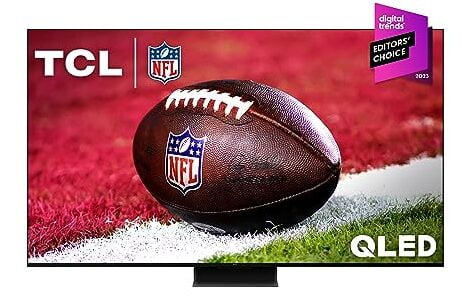
True Score
84847Experts
90478Customers
Absolutely Fresh
 SAVE $1$1,499.99$299.99
SAVE $1$1,499.99$299.99Read More
Snapshot
Reasons to Buy
- Outstanding picture quality
- Spectacular brightness and contrast ratio
- Rapid response time
- Super low input lag
Reasons to Avoid
- Disappointing viewing angles
Specifications
Max Resolution 3840 x 2160 (4k) 
Backlight Type Full-Array Refresh Rate 120 Hz 
Depth 11.7″ Display Type QLED HDMI Inputs (Total) 2 
HDMI Type HDMI 2.1 HDR Format Dolby Vision, HDR10, HDR10+, HLG 
Height 34.1″ High Dynamic Range (HDR) Yes 
Number of Audio Channels 3 
Panel Type LED Screen size 65″, 75″, 85″, 98″ 
Smart Platform Google TV 
Speaker Output 40 Watts 
Sync Technology AMD FreeSync Premium Pro 
VRR Yes 
Voice Assistant Google Assistant 
Weight 54.7 lbs 
Width 56.9″ 
Works With Amazon Alexa, Apple HomeKit, Google Assistant All Specs
Test Results
SDR Brightness (nits) 2,076 HDR Brightness (nits) 2,005 Color Gamut % (DCI P3 xy) 94.59 Response Time (ms) 8.9 Contrast Ratio (x:1) 114,057 EOTF (600 nit delta) 0.037 Color Gamut % (DCI P3 uv) 97.31 Color Gamut % (Rec 2020 xy) 75.81 Color Gamut % (Rec 2020 uv) 80.57 Color Gamut % (sRGB) 0 Color Gamut % (Rec 709) 0 Color Gamut % (BT.2020) 0 Color Gamut % (Adobe RGB) 0 Color Gamut % (BT.709) 0 Input Lag (ms) 14.3 Color Washout (Degrees) 24 Color Shift (Degrees) 31 Brightness Loss (Degrees) 32 Reflections (%) 1.8 Low-Freq Extension (Hz) 89.8 Freq Response StdDev @ 70db 4.74 Freq Response StdDev @ 80db 4.67 Weighted Total Harmonic Distortion @80db 0.128 Intermodulation Distortion @80db 8.67 EOTF (1000 nit delta) 0.0238 EOTF (4000 nit delta) 0.0271 All Tests
All Retailers
- $299.99$1,500Save $1
Availability
In StockFree Shipping
No - $1,198.00$1,398Save $200
Availability
In StockFree Shipping
Yes - $2,056.27
Availability
In StockFree Shipping
Yes
Our Verdict
TCL QM8/QM850G stands apart from other TCL TVs with its impressive color gamut coverage of 94.59% in the DCI P3 xy spectrum and unparalleled SDR and HDR brightness levels of 2076 nits and 2005 nits, respectively. This makes the TV an excellent choice for anyone wanting to watch TV in a brightly lit room without having to worry about ambient sunlight ruining picture quality. Plus, with a reflection rate of just 1.8% total light reflected, the QM8 minimizes glare when dealing with bright conditions.
If you’re a gamer looking for a way to deal with a very bright game room, the QM8 is an excellent choice. With a decent input lag of 14.3 ms, it’s an ideal choice for casual gamers seeking a responsive gaming experience without sacrificing visual fidelity. The TV also has a snappy response time of 8.9 ms, making it a great option for fast-paced games as well as sports, with minimal motion blur.
Home theater is where QM8 struggles a bit. Despite its exceptional contrast ratio of 114057:1, which gives deep blacks and bright whites, the TV struggles with EOTF. At 0.0370, the QM8 misses the mark on our minimum by almost a full 0.02. That may not seem like a lot, but it means that the QM8 has trouble accurately tracking gamma, which impacts how well the bright and dark parts of a scene are rendered out, and ultimately affects the mastering quality of HDR content.
Still, the TCL QM8/QM850G QLED TV is an excellent QLED TV for anyone that needs bright room performance. Its superiority in color gamut coverage, brightness levels, and contrast ratio makes it a standout option for anyone looking to upgrade their viewing experience and enjoy sports, casual gaming, and streaming content.
Read Less

Best Overall

Runner Up

Best Value

Best Budget

Best Mid-Range

Premium Pick
TCL Q7 (Q750G) Series QLED TV
Balancing budget and performance, the Q7 offers accurate colors and solid home theater experience in dim to moderate lighting, but it’s not the best pick for bright rooms or competitive gaming.
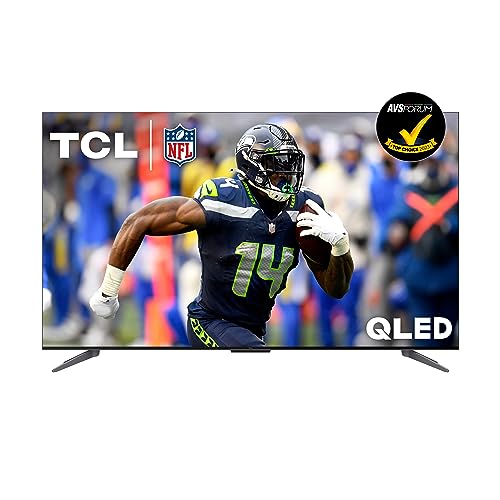
True Score
83821Experts
883kCustomers
Absolutely Fresh
 SAVE $50$449.99$399.99
SAVE $50$449.99$399.99Read More
Snapshot
Reasons to Buy
- Above-average picture quality
- Terrific contrast ratio
- High peak brightness
- Fast motion handling
- Quick refresh rate
Reasons to Avoid
- Narrow viewing angles
- Poor speaker quality
- Subpar reflection handling
Specifications
Max Resolution 3840 x 2160 (4k) 
Backlight Type Full-Array Refresh Rate 120 Hz 
Depth 13.4″ 
Dialogue Enhancement Feature Yes Display Type LED 
Energy Star Certified No HDMI Inputs (Total) 4 HDR Format HDR10, HDR10+, HLG 
Height 32.9″ High Dynamic Range (HDR) Yes 
LED Panel Type OLED Screen size 55″, 65″, 75″, 85″ 
Smart Platform Google TV 
Voice Assistant Google Assistant 
Weight 44.3 lbs 
Width 56.9″ 
Works With Amazon Alexa, Apple HomeKit, Google Assistant All Specs
Test Results
SDR Brightness (nits) 757 HDR Brightness (nits) 685 Color Gamut % (DCI P3 xy) 92.69 Response Time (ms) 10.8 Contrast Ratio (x:1) 80,160 EOTF (600 nit delta) 0.0102 Color Gamut % (DCI P3 uv) 96.12 Color Gamut % (Rec 2020 xy) 67.74 Color Gamut % (Rec 2020 uv) 73 Color Gamut % (sRGB) 0 Color Gamut % (Rec 709) 0 Color Gamut % (BT.2020) 0 Color Gamut % (Adobe RGB) 0 Color Gamut % (BT.709) 0 Input Lag (ms) 17.1 Color Washout (Degrees) 24 Color Shift (Degrees) 34 Brightness Loss (Degrees) 29 Reflections (%) 5.9 Low-Freq Extension (Hz) 100.79 Freq Response StdDev @ 70db 3.22 Freq Response StdDev @ 80db 3.49 Weighted Total Harmonic Distortion @80db 0.152 Intermodulation Distortion @80db 3.87 EOTF (1000 nit delta) 0.0104 EOTF (4000 nit delta) 0.0107 All Tests
All Retailers
- $399.99$450Save $50
Availability
In StockFree Shipping
No - $539.22
Availability
In StockFree Shipping
No - $600.00
Availability
In StockFree Shipping
No
Our Verdict
If you’re looking to get accurate gamma tracking in a budget set, the TCL Q7 (Q750G) Series QLED TV offers up solid home theater performance. With a color gamut coverage of 92.69% in the DCI P3 xy spectrum, it provides rich and accurate colors that pair well with the EOTF of 0.0102. While the Q650G has better EOTF, the Q7 beats it out in color gamut by a significant amount, making the Q7 the best option for home theater fans with a tight budget.
However, it’s worth noting that the contrast ratio of the Q7 comes in at 80160:1. This isn’t bad – far from it, it’s a very good contrast ratio overall, but it’s still significantly lower than the contrast offered by the QM8 – however, the Q7 is better suited to accurately representing the differences between light and dark on HDR content, thanks to its more accurate EOTF. If you want deeper blacks but less accuracy, the QM8 is the way to go – otherwise the Q7 will provide more accurate gamma.
The TV isn’t meant for brightly lit home theaters though. With an SDR and HDR brightness levels at 757 nits and 685 nits, respectively, it works best in moderately lit environments. Furthermore, the Q7’s reflection rate of 5.9% means if you try to mount it in brighter parts in the home, the glare may start causing problems and completely obscuring parts of the screen.
If you’re a gamer, the Q7’s input lag of 17.1 ms means you’ll likely be stuck playing casual games. The TV simply isn’t fast enough for competitive gaming, though the 10.9 ms response time means that any fast-paced action or sports content will be blur free and crisp. If gaming performance is what matters most to you, the QM8 is going to be the better pick.
If you’re looking for better EOTF performance without sacrificing color gamut coverage, the Q7’s unique measurements will improve your movie nights so long as the TV stays in dim or moderately lit rooms. Otherwise, the main appeal behind the Q7 is the fact it costs a little over a hundred less than the QM8 while staying the same size.
Read Less
Category Snapshot
TVs
- Total Brands/Products Tested
17 Brands, 158 Products
- Top 2 Brands
LG, Hisense
- Price Range (Budget-Premium)
$400-$2000
- Average True Score
76.65
- Important Test Criteria
Brightness (cd/m2)
Contrast Ratio (1000:1) - Most Trusted Testers

- Top TV Experts
- Recommended Retailer

- Typical Warranty
1 year
- Covered by Insurance
Yes – AKKO
- Test Methodology

Best Overall

Runner Up

Best Value

Best Budget

Best Mid-Range

Premium Pick
TCL Q650G TV
The Q650G stands out for budget-conscious gamers, offering responsive gameplay and decent picture quality in dim environments, though it lacks the premium home theater qualities of its pricier counterparts.
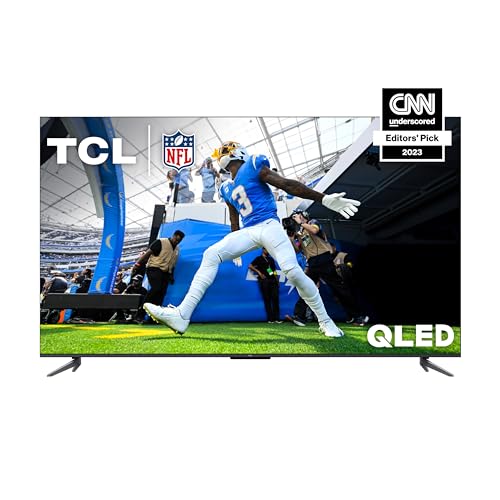
True Score
77753Experts
822kCustomers
Mixed Reviews
 $420.76
$420.76Read More
Snapshot
Reasons to Buy
- Good Picture Quality
- Great Brightness Levels
- Excellent Variable Refresh Rate Support
- Low Input Lag
Reasons to Avoid
- Pre-Calibration Color Accuracy Isn’t Great
- No Local Dimming
- HDM1 2.0 Only
Specifications
Max Resolution 3840 x 2160 (4k) 
Backlight Type Direct Lit Refresh Rate 120 Hz Display Type QLED HDMI Inputs 3 
HDMI Type 2.0 
HDR Dolby Vision, HDR10, HDR10+, Hybrid Log-Gamma (HLG) HDR Format Dolby Vision, HDR10, HDR10+, HLG 
Number of Audio Channels 2.0 
Panel Type VA Screen size 55″, 65″, 75″ 
Smart Platform Google TV 
Speaker Output 10 W 
Sync Technology AMD FreeSync 
VRR Yes All Specs
Test Results
SDR Brightness (nits) 486 HDR Brightness (nits) 497 Color Gamut % (DCI P3 xy) 88.47 Response Time (ms) 14.7 Contrast Ratio (x:1) 8,085 EOTF (600 nit delta) 0.0047 Color Gamut % (DCI P3 uv) 94.19 Color Gamut % (Rec 2020 xy) 64.58 Color Gamut % (Rec 2020 uv) 71.32 Color Gamut % (sRGB) 0 Color Gamut % (Rec 709) 0 Color Gamut % (BT.2020) 0 Color Gamut % (Adobe RGB) 0 Color Gamut % (BT.709) 0 Input Lag (ms) 10.9 Color Washout (Degrees) 26 Color Shift (Degrees) 45 Brightness Loss (Degrees) 30 Reflections (%) 5.8 Low-Freq Extension (Hz) 142.54 Freq Response StdDev @ 70db 5.75 Freq Response StdDev @ 80db 5.85 Weighted Total Harmonic Distortion @80db 0.03 Intermodulation Distortion @80db 2.56 EOTF (1000 nit delta) 0.0046 EOTF (4000 nit delta) 0.0045 All Tests
All Retailers
- $420.76
Availability
In StockFree Shipping
No - $427.99$450Save $22
Availability
In StockFree Shipping
No - $500.00
Availability
In StockFree Shipping
No
Our Verdict
If you’re prioritizing affordability without a significant compromise on quality, the TCL Q650G offers performance that’s good enough while still coming in a 65-inch package. It doesn’t offer the same wide gamut coverage that other TCLs do, but 88.47% coverage in the DCI P3 xy spectrum, will keep colors vibrant and fairly accurate, suitable for a variety of less demanding content.
While its SDR and HDR brightness levels, at 486 nits and 497 nits respectively, are lower compared to its higher-end counterparts, they remain sufficient for enjoying content in environments without excessive ambient light. The reflection rate of 5.8% may be a bit high, but the set isn’t meant for bright lights anyway, which means it shouldn’t be an issue if the TV is kept in dim or moderately lit rooms.
If you’re looking for a way to get a responsive gaming TV without breaking the bank though, the Q650G is appealing thanks to its best-in-class input lag of 10.9 ms. It also does respectably with response time, coming in at 14.7 ms which keeps action smooth and largely blur free, both in intense video games and when watching sports.
However, the Q650G faces challenges in delivering a premium home theater experience found in higher-tier models. Its contrast ratio of 8085:1, while adequate, does not achieve the deep blacks and peak brightness necessary for the most immersive HDR experiences. Moreover, its EOTF performance, with a delta of 0.0047, is largely wasted. The set has outstanding gamma tracking because of it – the best in its class – but the low brightness, sub-90% color gamut coverage and strictly adequate contrast ratio means serious home theater fans are better off going with the Q7.
For the money, the Q650 offers up a solid viewing experience for everyday content in most dim to moderately lit rooms, and carves a unique niche for itself as an extremely affordable gaming TV. If you’re a gamer on a budget, go with the Q650G. If you value home theater performance more and have room in the budget, the Q7 will serve you far better with fewer compromises.
Read Less

Our Approach to Testing TCL TVs
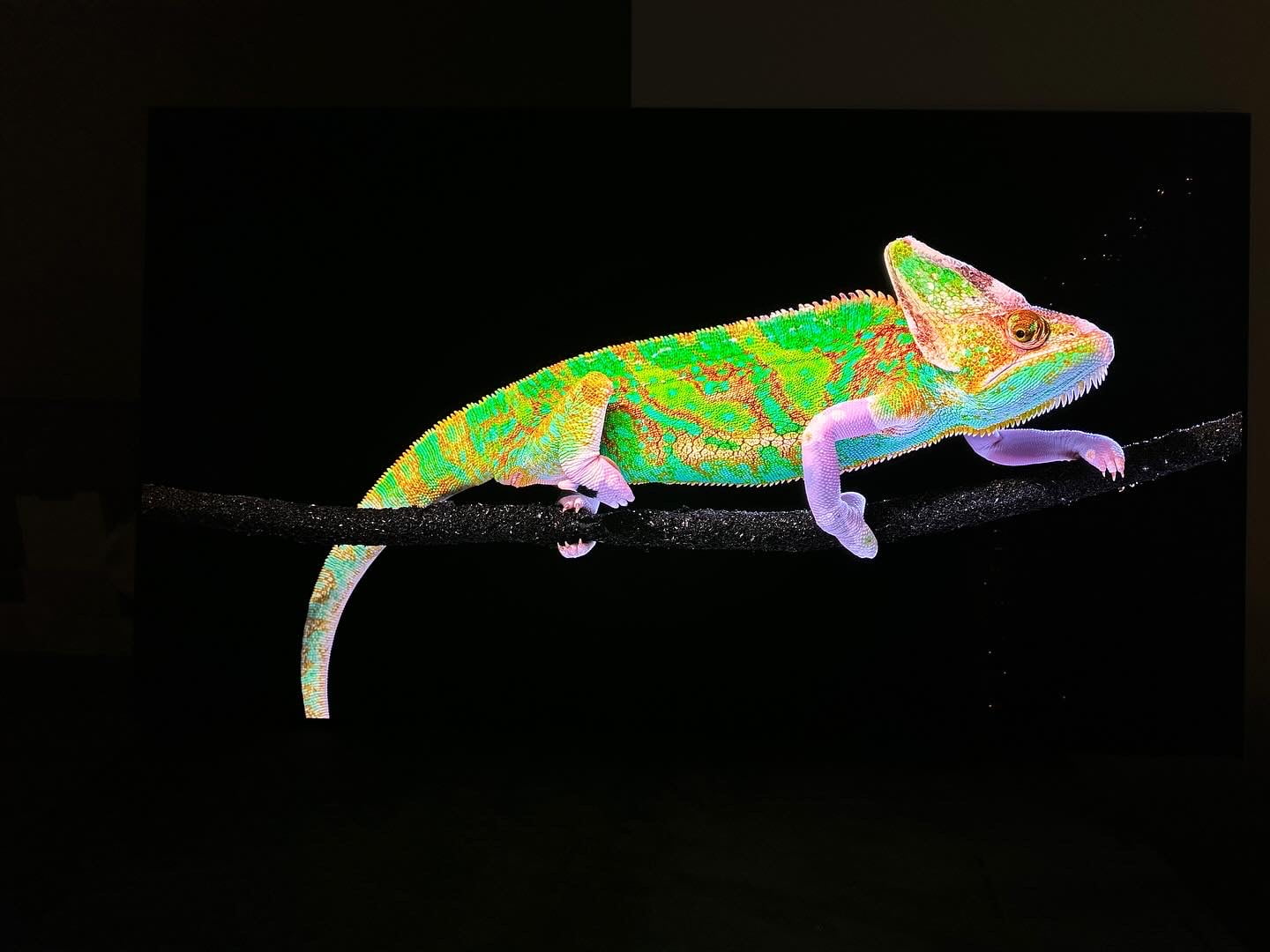
Evan Shepard/Gadget Review
The best TCL TVs offer premium quality without the premium price, backed by rigorous testing. With exceptional picture quality, advanced smart features, and competitive performance, TCL proves you can enjoy top-notch visuals and functionality without overspending.
We collect this data so you don’t have to, simplifying your decision-making process. By averaging testing data, we accurately depict product capabilities. This ensures our buying guides filter and sort products, guaranteeing they meet strict requirements for your TCL TV needs, whether it’s for gaming or seamless streaming.
You may notice some of our graphs contain “Source: RTings”. This is to indicate that the data we’re showing off in a graph has come from a single source – because it’s the only source that actually tested the criteria and had data for it! Normally, our data is an average out of all of the various publications that test and provide data to give you a good idea of how a product is going to perform on average.
Which Criteria Matters for Testing The Best TCL TVs?
By focusing on these criteria (3 required, 3 nice to have), anyone can quickly and easily compare these TVs and how they’ll perform. This helps you make an informed decision and purchase a TV that will fit into your space.
| CRITERIA | RANGE | REQUIRED | DEFINITION |
|---|---|---|---|
| SDR Brightness | 300+ nits | Yes | Assess the luminance of your display when operating in Standard Dynamic Range (SDR) mode. |
| HDR Brightness | 1000+ nits | Yes | Determine the luminance of your display in High Dynamic Range (HDR) mode. |
| Color Gamut (DCI P3 xy) | >= 90% | Yes | Evaluate the extent to which a TV can reproduce a specified spectrum of colors. |
| EOTF | 0.018 | No (nice to have) | Standard that governs how a display interprets and renders brightness and color. |
| Response Time | <=10ms | No (nice to have) | Time required for a pixel to transition from one color to another and then return to its original color. |
| Contrast Ratio | >= 10,000 | No (nice to have) | The ratio between the brightest white and darkest black that the screen can display. |
Our Trusted Data Sources
(Publication category Score is 80%+)
We looked at 210+ TV reviewers and while 24 are trustworthy (60%+ Trust Rating), we only use data from the testers that are “very trusted” which means a Trust Rating above 70%. The three we have listed below are our most trusted for TVs, along with our own in-house TV expert.
- Evan Shepard – Gadget Review
- Matthew Lopes – RTings, MuckRack
- Will Greenwald – PCMag, MuckRack, Twitter
- David Katzmaier – CNET, MuckRack, Twitter
Interested in a comprehensive analysis of our data sources? We’ve got you covered. Below, you’ll find a detailed list of every TV review website we’ve identified, organized by their respective Trust Ratings from highest to lowest. But we didn’t stop there. We’ve meticulously reviewed each publication and verified the data by checking whether the authors have bio links to MuckRack or LinkedIn. We’re committed to not only checking the facts but ensuring their veracity.
Best TCL TVs Test Data & Results
1. SDR & HDR Brightness TV Test Results
In well-lit rooms, the brightness level of your TCL TV, quantified in nits, is key to a great viewing experience. A TV that doesn’t meet the brightness requirement will struggle against natural and artificial light, resulting in a dim, lackluster image. Essentially, nits measure how well your TV can stand up to light interference, with higher values ensuring a sharper, more vivid display.
For standard viewing on the best TCL TV, you should look for at least 300 nits to strike the right balance between clarity and color quality in standard dynamic range (SDR) content. For high dynamic range (HDR) content, which offers richer colors and greater contrast, a minimum of 1000 nits is ideal to truly appreciate the enhanced visuals. These brightness levels are recommended to ensure your TV performs well in bright settings, allowing you to enjoy your shows and movies without any loss in detail or quality. Aim for these minimums: SDR Brightness >= 300 nits; HDR Brightness >= 1000 nits for the optimal experience.
Discover the top TCL TVs, ranked from brightest to least.
Brightness
SDR: 300+ nits
HDR: 1000+ nits
Acceptable range of performance
Definition: Maximum brightness in a specified pattern size window. Most commonly measured in a 10% or 100% white window.
Units of Measurement: nits (alternatively cd/m²)
Tools to Measure: TV, luminance meter
Why It’s Important:
Brightness helps counter ambient light so that details and colors don’t wash out and get lost.
SDR Brightness (in nits, higher is better)
HDR Brightness (in nits, higher is better)
2. Color Gamut (DCI P3 xy) TV Test Results
Color Gamut
>= 90%
Acceptable range of performance
Definition: The TV’s capability to display a spectrum of colors.
Units of Measurement: % (color space coverage in percent)
Tools to Measure: Colorimeter
Why It’s Important:
Inaccurate colors compromise the authenticity of the content.
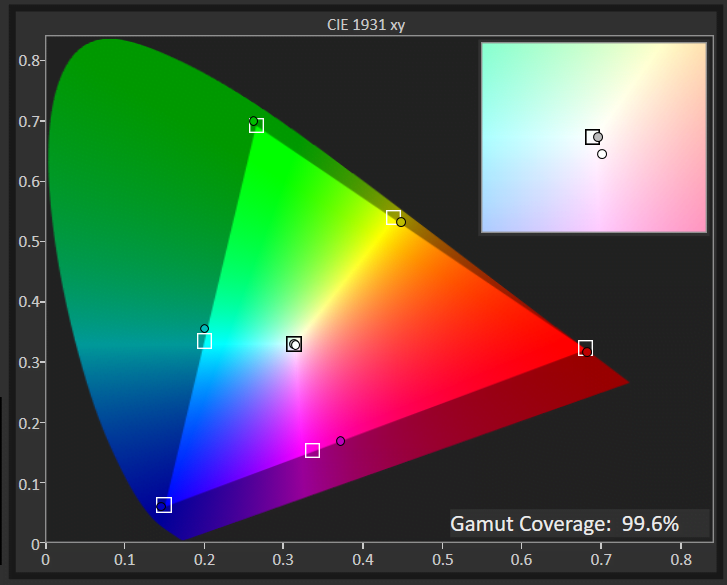
Color gamut defines the range of colors a TCL TV can reproduce, directly affecting how vibrant and true-to-life the images look. A wide color gamut brings out richer, more vivid colors – from the lush greens of a garden to the bright colors of animated characters, enhancing your viewing experience to closely mimic real life.
This concept is technically measured against standards like the DCI P3 xy, a benchmark for high-quality visuals. A TCL TV covering a higher percentage of this color space can display colors more accurately and vividly.
For those who prioritize vibrant and immersive visuals, aiming for a TCL TV with a color gamut of 90% or higher on the DCI P3 xy scale is ideal. This ensures that the content you watch is as vibrant and lifelike as possible.
Below are the top TCL TVs, ordered by color gamut.
DCI P3 XY Color Gamut (as a %; high is better)
3. EOTF Test Results
The Electro-Optical Transfer Function (EOTF) plays a critical role in ensuring the content on your TV looks exactly as the creator intended. This technical feature adjusts your screen’s brightness levels, ensuring every scene, from the darkest shadows to the brightest highlights, is displayed with true-to-life accuracy.
In rooms flooded with light, a TV that nails EOTF calibration shines by preserving the intended contrast and detail in the picture despite the challenging conditions. It balances the brightness so that images remain vibrant and full of detail, unaffected by the glare of ambient light.
A TV that excels in managing EOTF offers an immersive and authentic viewing experience. It brings creators’ visions to life, accurately rendering every scene with the proper light and dark levels, no matter the lighting in your room. This means you get a consistent, realistic picture that captures the full spectrum of colors and contrasts, from the subtlest hues to the most intense explosions.
Below are all the TCL TVs on our list, ordered by EOTF.
EOTF
< 0.018 (600 nit Δ)
Acceptable range of performance
Definition: How your TV interprets and renders the luminance data from content and translates it to be represented on screen. If EOTF/Gamma tracking is too low or too high, it will result in an over-brightened or over-darkened image from reference.
Units of Measurement: this test measures for the delta from the standard
Tools to Measure: Luminance colorimeter
Why It’s Important:
EOTF ensures that the game is displayed (color and HDR brightness) as the creator intended it
EOTF (source: rtings.com – 0 = no data exists; lower is better)
4. Response Time TV Test Results
Response Time
1ms-10ms
Acceptable range of performance
Definition: Speed at which a pixel transitions from one color to another
Units of Measurement: milliseconds (ms)
Tools to Measure: Screen, camera, test software
Why It’s Important:
A faster response time means less blur and thus more accuracy
A slow response time on a TCL TV during fast-paced scenes is like trying to watch a thrilling movie with a foggy lens. Imagine settling in for an action-packed sequence, only to have the swift movements turn into a blur, robbing you of the crisp, clear detail you crave. This isn’t just a minor annoyance; it’s a major detriment to your viewing experience, leaving you with a picture marred by motion blur and visual artifacts.
So, what exactly is response time? It measures how quickly a pixel on your TV can change from one color to another. In the context of watching fast-moving content or enjoying dynamic scenes on a TCL TV, a low response time is crucial. A response time of 15 ms or lower is good, but if you plan on gaming on this set, aim for a response time of 10 ms or lower. At these levels, your TCL TV ensures smooth transitions and sharp visuals, making every scene come to life without any distracting blurs or delays.
Below are the top TCL TVs, ordered by response time.
Response Time (in milliseconds; lower is better)
5. Contrast Ratio Test Results
For TCL TV enthusiasts, a solid contrast ratio is crucial for enjoying your favorite TV shows or movies, especially in darker settings. This feature directly impacts how lifelike and dynamic the picture appears on your screen, ensuring that dark scenes are displayed with clear, crisp blacks instead of murky grays and bright scenes retain their detail without appearing washed out.
Put simply, the contrast ratio is all about the range of luminance a TV can produce, from the deepest blacks to the brightest whites. It’s what brings depth to the image, enhancing the realism of every scene. Watching a movie in the dark, for example, the difference between a TV with a poor contrast ratio and one with a high ratio is stark: the former struggles, blending shadows into a flat gray, while the latter delivers true black, making night scenes more immersive and detailed.
Ideally, a contrast ratio of 10,000:1 is what you should aim for in a TCL TV. This level of luminance variance ensures that you’re getting a picture quality that can handle the nuances of lighting in any scene, providing a viewing experience that’s both rich and engaging. Note: OLED TVs have infinite contrast ratio, indicated by “0.”
Below are the top TCL TVs, ordered by contrast ratio.
Contrast Ratio
>=10,000:1
Acceptable range of performance
Definition: Difference between the darkest black and the brightest white a screen can display.
Units of Measurement: cd/m2
Tools to Measure: Luminance meter
Why It’s Important:
A higher contrast ratio delivers deeper blacks, enhancing content definition, especially in darker rooms.
Contrast Ratio (higher is better)
Best TCL TVs: Mistakes To Avoid
- Ignoring Screen Size: Many buyers overlook the importance of selecting the right screen size for their space, leading to discomfort or poor viewing experiences. The best 32-inch TV balances size and space, ensuring a comfortable viewing experience in smaller rooms. Understanding the principle of TV size vs distance is crucial; larger screens, such as those in the high-end Hisense TV range, require more viewing distance to fully appreciate their quality.
- Neglecting Resolution: Failure to consider resolution options can result in disappointment with picture quality, especially when expecting high-definition content. Reading our Element G series review or Hisense H6570G review highlights how even more budget-friendly options can offer an excellent resolution for many users. However, if you don’t need 4K quality, there are still options that provide great picture quality, like in our Samsung N5200 review.
- Overlooking Connectivity: Forgetting to check connectivity options may limit your ability to connect external devices, such as gaming consoles or sound systems. Like TCL TVs, many Samsung TVs are designed with a variety of connectivity options to cater to the diverse needs of users, ensuring compatibility with a wide range of external devices.
- Ignorance of Smart Features: Failing to research smart TV features may result in missing out on convenient streaming options or compatibility with preferred apps. For those looking into mid-range options, check out the Hisense U80G or for higher-end, the best Sony TV models stand out for their advanced smart features. For those desiring a seamless integration of devices, a top Roku TV could be the ideal solution, offering extensive connectivity and a user-friendly interface.
The Best TCL TVs Tests Compared
Product |
True Score
|
SDR Brightness
|
HDR Barightness
|
Color Gamut
|
EOTF
|
Response Time
|
Contrast Ratio
| |
|---|---|---|---|---|---|---|---|---|
| 84 |
|
|
|
|
|
| $299.99 $1,500 $1 |
83 |
|
|
|
|
|
| $399.99 $450 $50 | |
77 |
|
|
|
|
|
| $420.76 |

